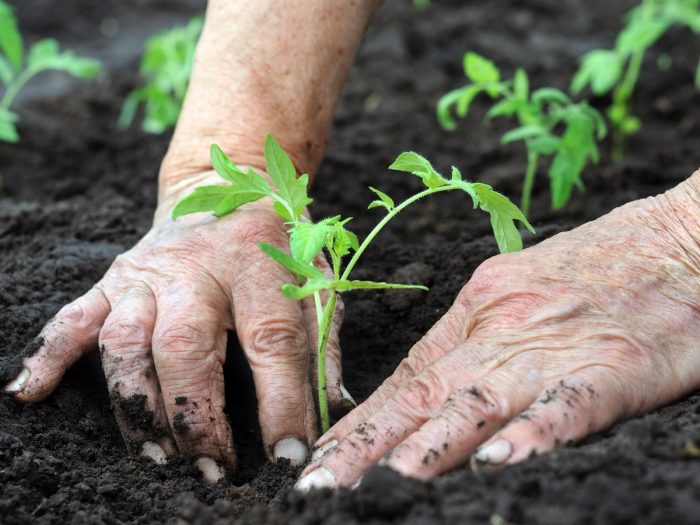Organic farming has been on the rise over the last decade, with environmental-friendly farmers growing and processing grains, fruits, and vegetables without the use of bioengineered genes (GMOs) or synthetic pesticides and fertilizers. But now, a new concept called regenerative agriculture is gaining momentum in the agriculture sector.
Regenerative agriculture places the spotlight on the quality of the soil instead of fruits and vegetables. So how are farmers nourishing the soil in these times of climate change as well as increased industrialization? Let’s find out.
What Is Regenerative Agriculture?
Regenerative agriculture is a system of farming techniques and principles that focuses on the health and regeneration of topsoil. Topsoil is the best part of the soil, from a crop-growth perspective. Proponents of regenerative farming believe that healthy soil is the foundation for best practices of agriculture and over time, healthy topsoil helps increase agricultural yields. According to the Rodale Institute, a pioneer of the organic movement in the U.S., regenerative agriculture “improves the resources it uses, rather than destroying or depleting them.” [1] [2]
One of the main benefits of regenerative agriculture, which makes it even more attractive as the climate change debate rages on, is that it boosts carbon-rich soil. Excess carbon created through photosynthesis in plants gets stored in the surrounding soil and this is known as soil organic carbon. Soil organic carbon provides structure to the soil and allows it to retain more water. This can be destroyed if there is too much of tillage, plowing, or digging. [3]

Did you know? An average US farmer can feed 155 people. Photo Credit: Shutterstock
Best Practices
Different practices that help increase the quality of topsoil include:
- Improving the water cycle: Farmers try to increase the soil’s capacity to absorb, retain, and release water through residue covers, mulching, and conservation tillage. [4]
- No-till farming or reduced-till farming: This is an agricultural technique that constricts the tillage of the farmland, which helps lessen the disturbance to the soil. This, in turn, increases water retention ability and reduces soil erosion. [5]
- Increasing biodiversity: Farms are ecosystems in and of themselves and each animal that lives there has an important role to play to balance the ecosystem. [6]
- Boosting biosequestration: The agriculture sector emits carbon dioxide, the greenhouse gas that is most responsible for the climate changes we are seeing today. Biosequestration is a natural process that stores and captures atmospheric carbon dioxide through natural biological processes. Methods like no-tilling farming help maintain the sequestration of carbon-rich organic matter in the soil. [7]
- Diversity of plants: Farmers can help create rich and nutrient-dense soil by increasing the plant diversity in their fields. A diverse set of microbes feed on the carbohydrates that are released through the roots of different plants, and these microbes return nutrients back to the plants and soil. [8]
- Permaculture: Amy Stross, author of The Suburban Micro-farm, [9] describes permaculture as “a system for designing agricultural landscapes that work with nature…”. People who have permaculture farms observe the landscape for a period of time and study what plant species would work best and what are the sun patterns, and so on.
Regenerative Agriculture Benefits
Here are the benefits of practicing regenerative agriculture:
- Yields nutrient-rich crops
- Increases farm profitability
- Absorbs excess carbon from the atmosphere
- Mitigates climate change
- Helps build resilient soil that can withstand floods and droughts
- Build biodiversity
Ben Falk, permaculture expert and author of The Resilient Farm and Homestead, [10]sums it up in his book, “As we begin to digest the news about the role of topsoil as linchpin in ecological health and human resource sustainability, we are waking up to a world of new possibilities, including global carbon negativity, agricultural yield improvements (while simultaneously reducing inputs), flood mitigation, and biodiversity rehabilitation.”
Takeaway
Several individuals, companies, and organizations are dedicated to building research and development of regenerative agriculture. For instance, Aranya Agricultural Alternatives in India organizes conferences and workshops to promote natural agricultural practices based on forests’ self-regulating ecosystems. Kiss the Ground, a California-based non-profit organization, helps businesses develop more sustainable supply chains globally. Big brands like General Mills, which makes cereals among other foods, are working with farmers to develop and practice more sustainable farming practices. With the push towards eco-friendly agricultural practices, more countries are likely to look at implementing regenerative farming projects in the agriculture sector. [11]

